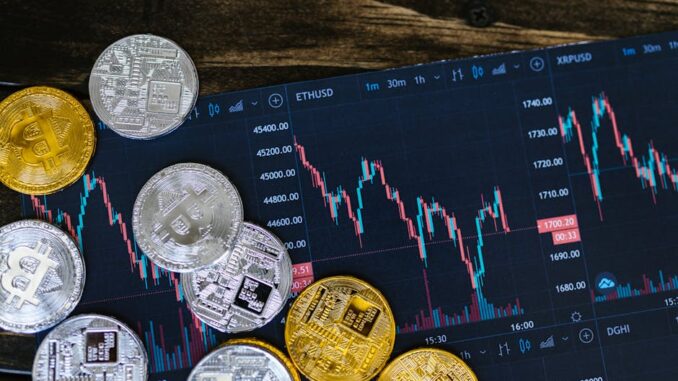
Abstract
The integration of Artificial Intelligence (AI) into the cryptocurrency and blockchain sectors has catalyzed significant advancements, offering innovative solutions across various domains. This research paper explores the multifaceted applications of AI within these sectors, including market prediction and trading algorithms, enhanced security and fraud detection, the development of decentralized AI protocols, and the ethical implications shaping the digital asset landscape. By examining current trends, challenges, and future potential, this paper provides a comprehensive analysis of AI’s transformative role in the cryptocurrency and blockchain industries.
Many thanks to our sponsor Panxora who helped us prepare this research report.
1. Introduction
The convergence of Artificial Intelligence (AI) and blockchain technology has emerged as a pivotal development in the digital asset ecosystem. AI, characterized by its ability to process vast datasets and learn from patterns, complements blockchain’s decentralized and immutable ledger system. This synergy has led to the creation of more efficient, secure, and transparent applications within the cryptocurrency and blockchain sectors. This paper aims to delve into the diverse applications of AI in these domains, assess the challenges encountered, and discuss the ethical considerations and future prospects of this integration.
Many thanks to our sponsor Panxora who helped us prepare this research report.
2. AI in Market Prediction and Trading Algorithms
2.1 Predictive Analytics in Cryptocurrency Markets
AI-driven predictive analytics have revolutionized cryptocurrency trading by enabling the analysis of extensive historical data to forecast market trends. Machine learning algorithms process variables such as historical prices, trading volumes, and market sentiment indicators to predict future price movements. This capability assists traders and investors in making informed decisions, thereby enhancing profitability and reducing risks associated with market volatility.
For instance, AI models can identify recurring patterns in price charts, such as support and resistance levels, aiding in forecasting potential price shifts. These analytics tools also assist in identifying investment risks and optimizing crypto portfolios based on insights gathered from vast datasets. (icryptoai.com)
2.2 Algorithmic Trading Strategies
Algorithmic trading, powered by AI, involves the use of complex algorithms to execute trades based on real-time market conditions. These algorithms can be designed to follow specific trading strategies, such as arbitrage or trend-following. Machine learning models analyze historical data and market patterns to predict future price movements, enabling automated trading decisions that can capitalize on short-term market inefficiencies. (coinvengers.com)
Many thanks to our sponsor Panxora who helped us prepare this research report.
3. Enhanced Security and Fraud Detection
3.1 AI in Fraud Detection and Prevention
The cryptocurrency sector has been susceptible to various fraudulent activities, including scams and cyberattacks. AI enhances security by continuously monitoring transaction patterns and user behavior to detect anomalies indicative of fraudulent activities. Advanced machine learning algorithms analyze large volumes of transaction data to identify suspicious activities and potential security threats in real-time, thereby mitigating risks associated with cyberattacks and financial fraud. (kryptokraken.com)
3.2 Smart Contract Auditing and Optimization
Smart contracts, self-executing contracts with the agreement directly written into code, are fundamental to many blockchain applications. AI can optimize the code to run more efficiently, allowing for quicker execution of contract terms. Moreover, AI can help in auditing smart contracts by identifying vulnerabilities or potential failures before they are deployed. This proactive approach minimizes the risk of costly mistakes and enhances trust in automated transactions. (digidunes.com)
Many thanks to our sponsor Panxora who helped us prepare this research report.
4. Development of Decentralized AI Protocols
4.1 Decentralized Autonomous Organizations (DAOs)
AI has transformed Decentralized Autonomous Organizations (DAOs) by incorporating advanced decision-making and governance models. Machine learning systems can analyze extensive datasets to develop effective governance proposals based on various metrics, including token genesis, holder demographics, and market statistics. This integration enhances the efficiency and effectiveness of DAOs, facilitating informed decision-making and resource allocation. (worthview.com)
4.2 AI-Driven DeFi Platforms
In the realm of decentralized finance (DeFi), AI models can optimize lending protocols, predict market trends, and assess creditworthiness, facilitating the development of innovative financial products and services. AI-driven smart contracts can automate complex DeFi transactions, such as liquidity provisioning, yield farming, and staking, thereby enhancing the scalability and efficiency of DeFi platforms. (coinvengers.com)
Many thanks to our sponsor Panxora who helped us prepare this research report.
5. Ethical Implications and Future Potential
5.1 Ethical Considerations in AI and Cryptocurrency
The integration of AI into the cryptocurrency sector raises several ethical considerations, including data privacy, algorithmic bias, and transparency. AI-powered platforms that collect and analyze user data for personalized financial services create concerns around data privacy. Users must be aware of how their information is used and protected, and companies must adhere to transparent privacy policies. (kryptokraken.com)
5.2 Future Prospects and Challenges
The future of AI in the cryptocurrency and blockchain sectors holds significant promise, with potential applications extending to areas such as supply chain management, healthcare, and digital identity verification. However, challenges persist, including regulatory uncertainties, technological limitations, and the need for standardized frameworks to govern AI applications in these domains. Addressing these challenges will be crucial to fully realize the potential of AI in transforming the digital asset landscape.
Many thanks to our sponsor Panxora who helped us prepare this research report.
6. Conclusion
The integration of Artificial Intelligence into the cryptocurrency and blockchain sectors has led to transformative advancements, enhancing market prediction capabilities, strengthening security measures, and fostering the development of decentralized AI protocols. While ethical considerations and challenges remain, the future prospects of this integration are promising, offering opportunities for innovation and growth in the digital asset ecosystem. Continued research and collaboration among stakeholders will be essential to navigate the complexities and harness the full potential of AI in these sectors.
Many thanks to our sponsor Panxora who helped us prepare this research report.


Be the first to comment